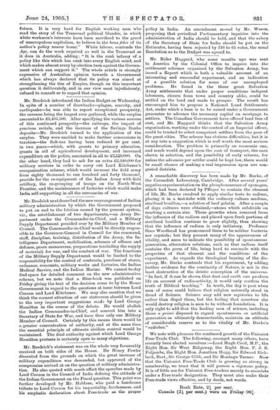A remarkable discovery has been made by Mr. Burke, of
the Cavendish Laboratory, Cambridge. After several years' negative experimentation on the phosphorescence of cyanogen, which bad been declared by Pfliiger to contain the element of life, Mr. Burke resolved to apply similar tests to radium,, placing it in a test-tube with the ordinary culture medium, sterilised bouillon,ŌĆöa solution of beef gelatin. After a couple of days cultures were obtained,ŌĆöatoms which subdivide on reaching a, certain size. These growths when removed from the influence of the radium and placed upon fresh portions of sterilised bouillon continue to grow slightly, thus showing that the influence of radium is only initiatory. Professor Sims Woodhead has pronounced them to be neither bacteria nor crystals ; but they present many of the appearances of vitality, and seem to indicate the possibility of spontaneous generation, alternative solutions, such as that radium itself contains the germ of life, being bard to reconcile with the properties of that element and the conditions of the experiment. As regards the theological bearing of the dis- covery, Mr. Burke contends that his experiment, by adding further evidence for the continuity of Nature, is not in the least destructive of the deistic conception of the universe. " In fact, if it can be shown that dust and earth can produce life on account of radio-activity, it would only confirm the truth of Biblical teaching." In truth, the day is past when men of sense could believe that religion naturally stood in dread of Science. Science may add new mysteries to life rather than dispel them, but the feeling that somehow she would destroy religion is seen to be without foundation. It is only right to add that the leading men of science, including those a priori disposed to regard spontaneous or artificial generation as ultimately demonstrable, maintain an attitude of considerable reserve as to the vitality of Mr. Burke's " radiobes."


















































 Previous page
Previous page